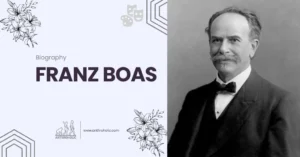AI Answer Evaluation Platform Live Now. Try Free Answer Evaluation Now
Cross-Cultural Comparison
Cultural diversity is an essential aspect of human existence, encompassing a wide array of beliefs, values, customs, and practices that shape societies across the globe. Anthropology, as a discipline, delves into the exploration and understanding of this diversity. By conducting cross-cultural comparison, anthropologists shed light on the unique characteristics and complexities of different cultures, highlighting both their similarities and differences. These comparisons not only deepen our knowledge of human societies but also provide valuable insights into the human experience as a whole.

In examining cultural diversity, anthropologists utilize various methodologies to ensure the accuracy and validity of their research. Ethnographic fieldwork is a commonly employed method, involving immersive experiences within specific cultural contexts. Through participant observation, interviews, and document analysis, anthropologists gather rich and detailed data that capture the intricacies of cultural practices and belief systems.
Understanding the Beauty of Cross-Cultural Exchanges
Cross-cultural exchanges occur when individuals from different cultural backgrounds interact, share ideas, and exchange practices. These exchanges can take place through migration, globalization, tourism, or even online platforms. They serve as platforms for the transmission of cultural knowledge, fostering mutual learning and appreciation.
In the contemporary globalized world, cross-cultural exchanges have become increasingly common and influential. They facilitate the diffusion of ideas, technologies, and artistic expressions across borders, leading to cultural hybridization and the emergence of new cultural forms. For example, the adoption of yoga practices in Western societies and the fusion of traditional and contemporary musical genres are manifestations of cross-cultural exchanges that shape both the sending and receiving cultures.
Tracing Cultural Roots: Heritage and Ancestry
Understanding cultural heritage and tracing ancestral roots provides valuable insights into the historical foundations of societies and their cultural identity. Anthropology offers a lens through which we can explore the intricate connections between the past and the present, shedding light on the ways in which history shapes cultural practices and beliefs.
Cultural heritage encompasses tangible and intangible aspects of a society’s history, including architecture, artifacts, language, rituals, and traditional knowledge [1]. By examining these elements, anthropologists uncover the historical trajectories of cultures and the influences that have shaped their development. For instance, the study of ancient ruins, such as the Mayan temples in Central America or the Great Wall of China, allows us to trace the architectural and engineering practices of past civilizations, providing insights into their technological advancements and societal organization (Smith, 2019).
Ancestry and genealogy research further contribute to understanding cultural roots. By analyzing DNA, anthropologists can identify patterns of migration, genetic connections, and population movements across generations. For example, genetic studies have revealed the migration patterns of early humans out of Africa, contributing to our understanding of human evolution and the spread of Homo sapiens to different parts of the world [2].
Echoes of Time: How History Shapes Cultural Identity
History plays a significant role in shaping cultural identity. The historical experiences of a society, including colonization, migration, conflicts, and cultural exchanges, leave lasting imprints on their collective memory and identity. Anthropologists delve into these historical perspectives to unravel the ways in which history influences cultural practices, beliefs, and social dynamics. Through these historical perspectives, we gain insights into the complexities of cultural identity negotiation, intergenerational trauma, and the resilience of indigenous cultures.
Furthermore, history shapes the narratives and myths that societies construct to establish a sense of identity and continuity. These narratives often draw on historical events and figures that hold symbolic significance. For instance, the stories and legends of national heroes or founding ancestors are embedded in the cultural fabric of many societies, shaping their collective identity and providing a sense of belonging.
The Global Tapestry: Connecting Cultures
In today’s interconnected world, the boundaries between cultures are becoming increasingly porous, leading to a multitude of interactions and exchanges. Building bridges across borders not only facilitates the flow of people, ideas, and goods but also fosters intercultural understanding and appreciation. Anthropology plays a crucial role in understanding and documenting these cultural connections, highlighting the ways in which diverse societies come together and shape the global tapestry.
One significant aspect of building bridges across borders is the phenomenon of migration. People move across geographic boundaries, bringing with them their unique cultural backgrounds and traditions. Anthropologists study these migratory processes to comprehend how individuals negotiate their identities and adapt to new cultural contexts. For example, the migration of Indian communities to various parts of the world has led to the establishment of vibrant diasporic cultures, where traditional practices merge with local customs, creating unique cultural expressions [3].
Cultural festivals and events also serve as bridges that connect cultures from different regions. They provide platforms for communities to come together, share their cultural practices, and celebrate their collective heritage. The Notting Hill Carnival in London, for instance, brings together diverse communities from the Caribbean and beyond, showcasing their music, dance, and culinary traditions. Such festivals foster cross-cultural interactions, allowing people to appreciate and learn from one another’s cultural practices.
Cultural Fusion: Where Traditions Meet
Cultural fusion occurs when different cultural traditions intersect, leading to the creation of new cultural forms and expressions. It is a dynamic process that arises from cross-cultural encounters and influences. Anthropologists investigate cultural fusion to understand how traditions evolve and adapt in response to changing social dynamics.
One notable example of cultural fusion is the emergence of fusion cuisine. In multicultural societies, culinary traditions from different cultures intertwine, resulting in innovative and unique culinary experiences. For instance, the fusion of Asian and Latin American cuisines has given rise to popular dishes like Korean tacos or sushi burritos. Such culinary fusion not only reflects changing tastes and preferences but also symbolizes the coming together of diverse cultural influences.
Cultural fusion is also evident in artistic expressions. Through the blending of traditional and contemporary elements, artists create new forms that challenge traditional notions of cultural boundaries. In music, genres like jazz, reggae, and hip-hop have emerged from the fusion of different cultural musical traditions [4]. These hybrid genres not only serve as a means of artistic expression but also act as a platform for social and political commentary, reflecting the diverse experiences and identities of the communities from which they originate.
Cultural Kaleidoscope: Unveiling Hidden Similarities
While cultures around the world may appear vastly different at first glance, anthropological research has consistently revealed surprising parallels and shared values across diverse societies. Exploring these commonalities deepens our understanding of human nature and provides insights into the universal aspects of the human experience.
One area where shared values often emerge is in the realm of family and kinship. Despite variations in family structures and practices, the significance of familial bonds and the importance placed on care, support, and love for one’s family members are often universal. These shared values reflect the fundamental human need for connection and support within familial networks.
Belief systems also exhibit surprising parallels. Anthropologists have observed recurring themes and concepts in religious and spiritual practices across cultures. For instance, the notion of a higher power or divine being is present in many belief systems, albeit with different names and interpretations.
Rituals and ceremonies associated with birth, coming of age, marriage, and death also demonstrate striking similarities, highlighting the universal need for marking significant life transitions. Exploring these shared values and beliefs helps us recognize the interconnectedness of human experiences and the deep-seated desire to make meaning of our existence.
Threads That Bind Us: Common Practices and Traditions
Cultural practices and traditions often serve as threads that bind societies together. Anthropological studies have revealed remarkable commonalities in these practices, reflecting shared human needs, aspirations, and ways of navigating the world.
One such example is the practice of storytelling. Narratives and myths have been utilized in diverse cultures throughout history to transmit knowledge, convey moral lessons, and explain the mysteries of the world. While the specific stories and characters may vary, the act of storytelling itself and its role in shaping collective identities and cultural memory are found in cultures worldwide.
Another shared practice is the celebration of seasonal festivals. Many cultures mark the changing seasons with communal festivities, often involving music, dance, feasting, and symbolic rituals. These celebrations not only reflect the cyclical nature of life but also reinforce social bonds, foster community cohesion, and provide opportunities for individuals to express their cultural identities.
By unveiling these hidden similarities in values, beliefs, and practices, anthropological research challenges stereotypes and fosters a deeper appreciation for the common threads that connect humanity. Recognizing these shared aspects of culture promotes intercultural understanding, empathy, and a sense of global interconnectedness.
Cultural Encounters: Lessons in Humanity
Cultural encounters provide invaluable opportunities to challenge and break down stereotypes that perpetuate cultural misconceptions. Anthropology plays a vital role in examining these encounters, debunking stereotypes, and promoting a more nuanced understanding of diverse cultures.
Stereotypes arise from oversimplified and generalized assumptions about a particular culture or group. However, cultural encounters provide first-hand experiences that can shatter these misconceptions. For example, the portrayal of Indigenous cultures as primitive and backward has been widely contested through anthropological research. By engaging with Indigenous communities and understanding their rich cultural practices, knowledge systems, and environmental stewardship, anthropologists have helped dispel such misconceptions. These encounters reveal the complexities and strengths of Indigenous cultures, challenging dominant narratives and fostering appreciation for their contributions to humanity.
Empathy Across Borders: Learning from Other Cultures
Cultural encounters also foster empathy and promote learning from other cultures. When individuals engage with different cultures, they gain insights into alternative worldviews, values, and practices. This exposure enhances intercultural understanding, encourages open-mindedness, and broadens perspectives.
Empathy is a crucial element in cultural encounters. It allows individuals to connect emotionally and intellectually with people from different backgrounds. By putting ourselves in the shoes of others, we can develop a deeper appreciation for their experiences, challenges, and aspirations [5]. Anthropologists employ ethnographic methods to cultivate empathy by immersing themselves in different cultural contexts, listening to diverse voices, and seeking to understand the meanings behind cultural practices.
An example of empathy across borders can be seen in refugee and migrant experiences. Anthropologists have explored the stories and challenges of displaced populations, shedding light on their resilience, adaptability, and contributions to host societies. Through these encounters, stereotypes and prejudices are confronted, fostering empathy and advocating for social justice and inclusive policies.
Cross-Cultural Communication: Bridging the Divide
Cross-cultural communication is a critical aspect of navigating the complexities of a diverse and interconnected world. Anthropology emphasizes the importance of effective communication in fostering intercultural understanding and bridging divides between different cultural groups.
Effective cross-cultural communication involves more than just language proficiency. It requires an understanding of cultural norms, values, and communication styles. Anthropologists recognize that cultural differences influence how individuals express themselves, interpret messages, and convey meaning. By studying communication patterns within diverse cultural contexts, anthropologists identify barriers and develop strategies to overcome them.
Embracing Global Citizenship: Effective Cross-Cultural Interactions
Embracing global citizenship entails recognizing our interconnectedness with people from diverse cultural backgrounds and engaging in meaningful cross-cultural interactions. Anthropology encourages individuals to develop the skills and mindset necessary for successful engagement in a globalized world.
Effective cross-cultural interactions require openness, empathy, and a willingness to learn from others. It involves acknowledging and respecting cultural differences while finding common ground. Anthropological studies provide insights into successful cross-cultural interactions by highlighting the importance of active listening, suspending judgment, and adapting communication styles to accommodate cultural diversity [6].
An example of effective cross-cultural interaction can be seen in international business negotiations. Anthropological research has identified cultural factors that influence negotiation styles and preferences. Understanding these cultural nuances helps negotiators adapt their strategies, avoid misunderstandings, and build trust. By embracing cultural diversity and employing effective communication techniques, individuals and organizations can foster positive and mutually beneficial relationships across cultural boundaries.
Cultivating Cultural Sensitivity: Key to Global Harmony
Cultivating cultural sensitivity is essential for fostering global harmony and meaningful intercultural interactions. Anthropology emphasizes the importance of developing a deep understanding and appreciation for cultural diversity, which promotes empathy, respect, and mutual understanding.
Cultural sensitivity involves recognizing and respecting the values, beliefs, customs, and practices of diverse cultural groups. It requires individuals to approach interactions with humility and an open mind, acknowledging that their own cultural perspectives are not the sole truth or standard by which to judge others.
Anthropological research has demonstrated the positive impact of cultural sensitivity on various aspects of society. For example, in healthcare settings, cultural sensitivity plays a crucial role in ensuring equitable and effective healthcare delivery. Understanding cultural norms, beliefs about health and illness, and communication styles enables healthcare providers to provide culturally appropriate care and build trust with patients from diverse backgrounds.
Embracing Diversity: Promoting Inclusion and Social Cohesion
Embracing diversity is key to promoting inclusion and social cohesion in our increasingly interconnected world. Anthropology highlights the benefits of embracing diversity, as it enriches societies by bringing together different perspectives, knowledge systems, and experiences.
Anthropological studies demonstrate that diverse societies tend to be more innovative, creative, and adaptable. By fostering inclusive environments that value and celebrate diversity, societies can harness the collective wisdom and talents of individuals from different cultural backgrounds.
Promoting social cohesion is another important outcome of embracing diversity. When individuals from diverse backgrounds come together and engage in meaningful interactions, they build social networks, establish common goals, and work towards shared aspirations. Anthropologists emphasize the importance of creating spaces and policies that facilitate intercultural interactions, such as multicultural festivals, inclusive educational curricula, and diverse workplace environments.
References
[1] Blake, J. (2018). Cultural Heritage. In International Encyclopedia of Anthropology (pp. 1-13). Wiley.
[2] Reich, D. (2018). Who We Are and How We Got Here: Ancient DNA and the New Science of the Human Past. Pantheon. https://www.researchgate.net/publication/334656526_David_Reich_Who_We_Are_and_How_We_Got_Here_Ancient_DNA_and_the_New_Science_of_the_Human_Past_Oxford_Oxford_University_Press_2018_xxxi_and_335pp_28_illustr_pbk_ISBN_978-0-19-882126-7
[3] Cohen, R. (2020). Global Diasporas: An Introduction (3rd ed.). Routledge.
[4] Alim, H. S. (2021). Global Linguistic Flows: Hip-Hop Culture(s), Transcultural Significations, and Multilingual Citizenship. Language & Communication, 78, 103-114.
[5] Hollan, D., & Throop, C. J. (2018). The Anthropology of Empathy: Experiencing the Lives of Others in Pacific Societies. Routledge.
[6] Hofstede, G., Hofstede, G. J., & Minkov, M. (2010). Cultures and Organizations: Software of the Mind. McGraw-Hill.




